
I spoke at the local dental society meeting and I mentioned that zirconia was not my ‘go to’ material for crowns, and I felt like I could hear the gasps. We know within the lab industry the use of zirconia has surpassed the use of every other aesthetic material so how can I not be totally onboard with its use. Let me clarify. I started using zirconia even before it was first officially launched, and we did a lot of the beta testing. Back then it was strong, but opaque. We hid it in the back of the mouth. Then we began layering porcelain on it for aesthetics and the coefficient of thermal expansion differences created separation of the zirconia framework and the layered porcelain. For bridges the connectors of a zirconia bridge were recommended to be more robust than metal connectors which sometime made it less aesthetic. And back in the early days we didn’t know how to bond zirconia properly so the patients I saw with worn dentitions and short teeth could be a challenge. With short preparations and little retention, I would sometimes see the bridges come off. The good thing is like a porcelain-fused-to-metal bridge the zirconia bridge itself did not break and could be recemented.
Today it is a different story, I do like zirconia for bridges. With zirconia Corr is now able to create fantastic aesthetics. The bridges fit well, and we don’t have to worry about any gray metal affecting our aesthetics. Additionally, when properly bonded I have seen amazing success. But I have had to adapt my bonding for zirconia, which is not like a ceramic material, remember it is chemically a metal, just white.
It begins with proper case planning, and some of the questions I ask when I select zirconia as my restorative material are:
Do I have enough preparation height to retain the restoration (like the old zinc phosphate days)?
Can I create preparations with good parallelism for added retention?
Can I bond the restoration for added retention?
So, let me show you a case where we had to replace a porcelain-fused-to-metal bridge replacing tooth #6 (Figure 1).
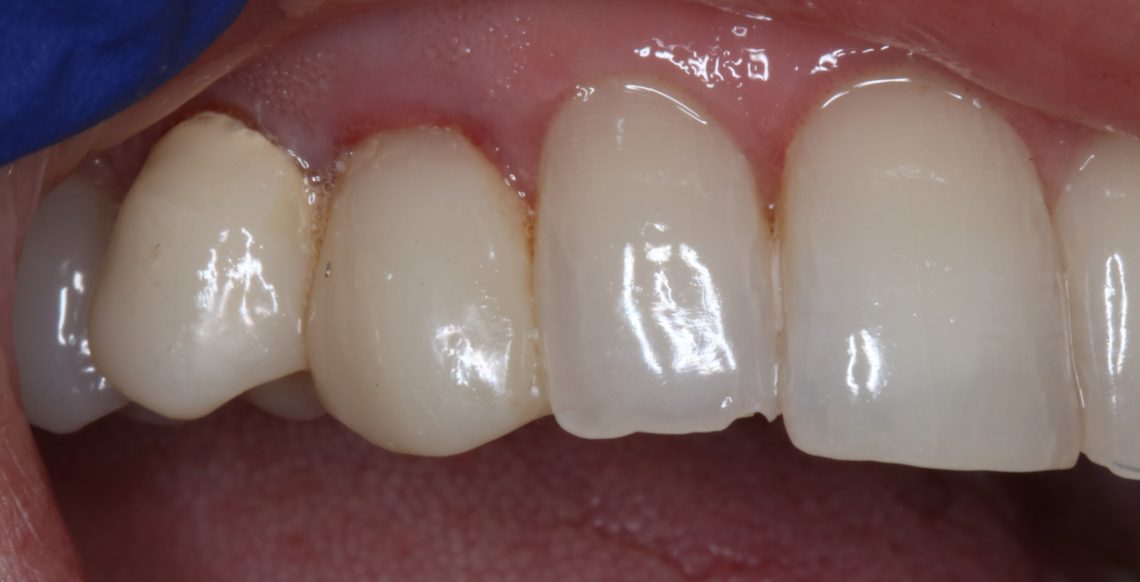
I considered preparing tooth #7 for an abutment crown, but then the aesthetics would be harder to achieve, and it would mean preparing the tooth and losing a lot of good tooth structure. Tooth #5 was a very healthy and stable tooth, so I decided to keep the same bridge design with a lingual wing preparation on tooth #7, but to use zirconia as the restorative material. For the lingual preparation I added two vertical grooves for line of draw retention, but I was going to rely on good bonding to maximize the retention.
Let me review how I bond zirconia.
Using an outstanding lab like Corr we were able to design and create a bridge that by itself had outstanding aesthetics and fit (Figs 2 and 3). The bridge demonstrated very good retention during the try-in, and no adjustments were needed.
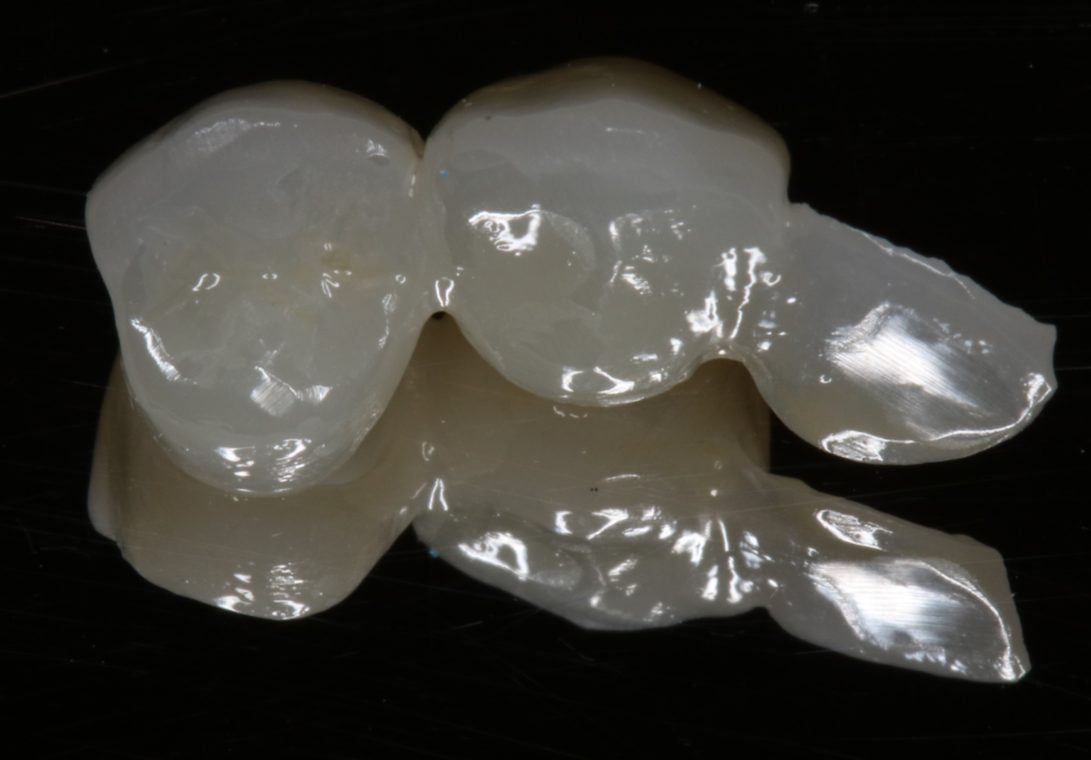
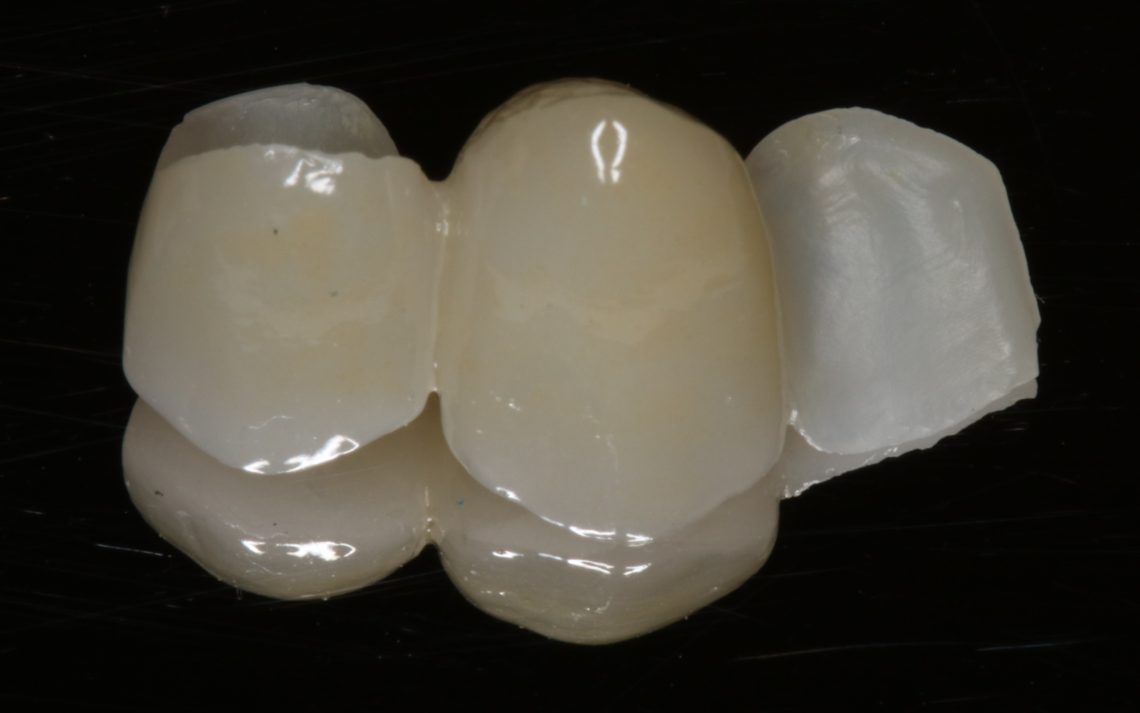
Now you know we can’t bond in the bridge after it has been contaminated by saliva or blood, and we cannot use phosphoric acid on zirconia. After the try-in we need to remove the proteins and phosphates which adhere to the internal surface of our zirconia restoration and inhibit our ability to bond to the internal surface.
So, step #1 AFTER the try-in is complete and the restoration is ready to be cemented is to treat the internal aspects of the restoration with Ivoclar’s Ivoclean or air abrasion. In this case we used Ivoclean brushing it on for 20 seconds and rinsing it off thoroughly, then drying with oil-free air (Fig. 4).
Then we placed a metal primer (Danville’s Prelude One) on the internal aspect of the bridge for 20 seconds (Fig. 5) and dried it thoroughly to remove any solvent (Fig. 6).
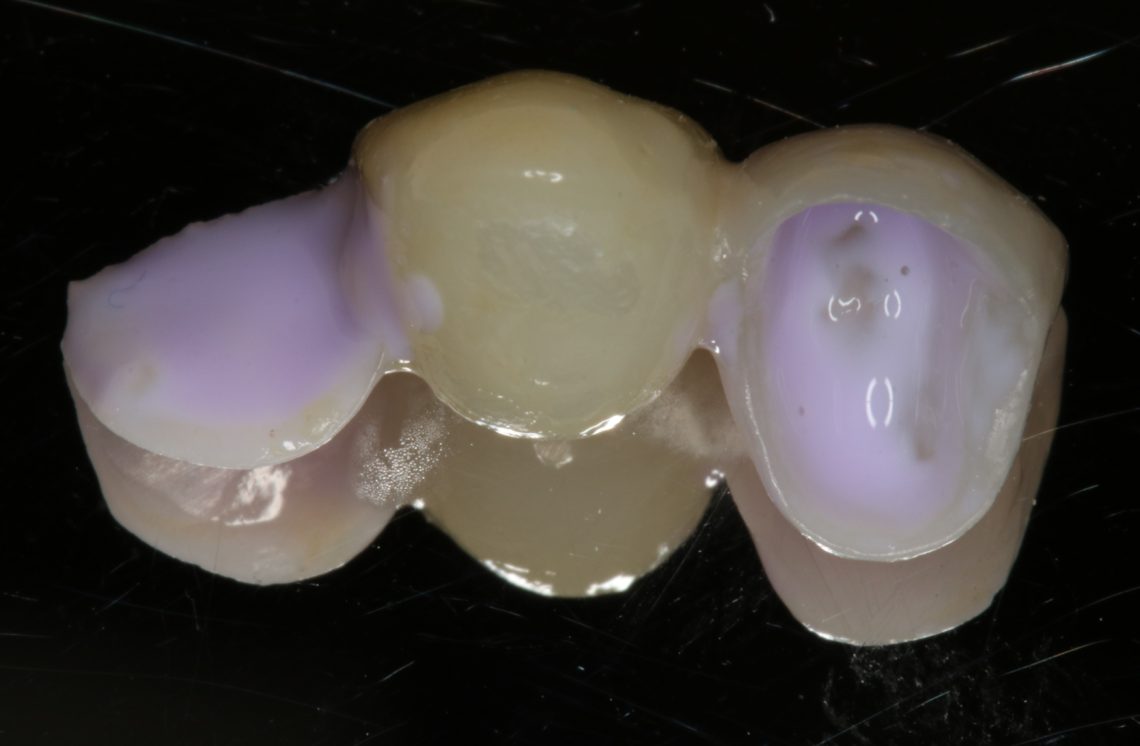
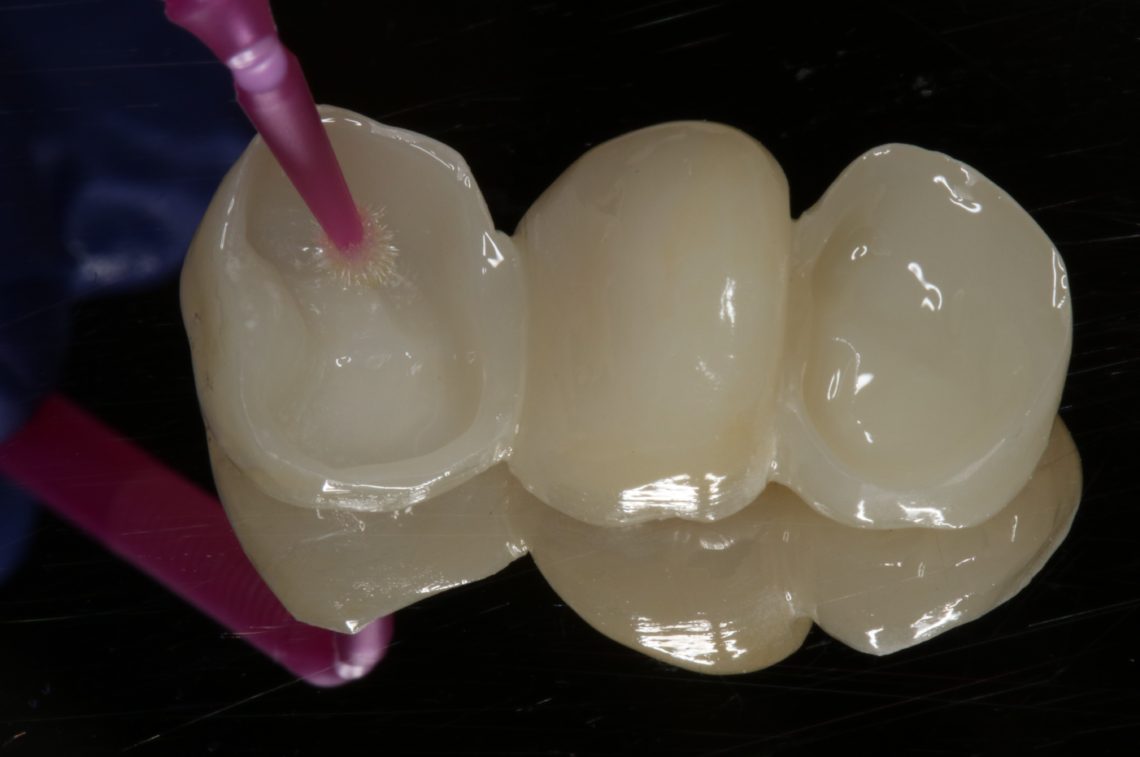
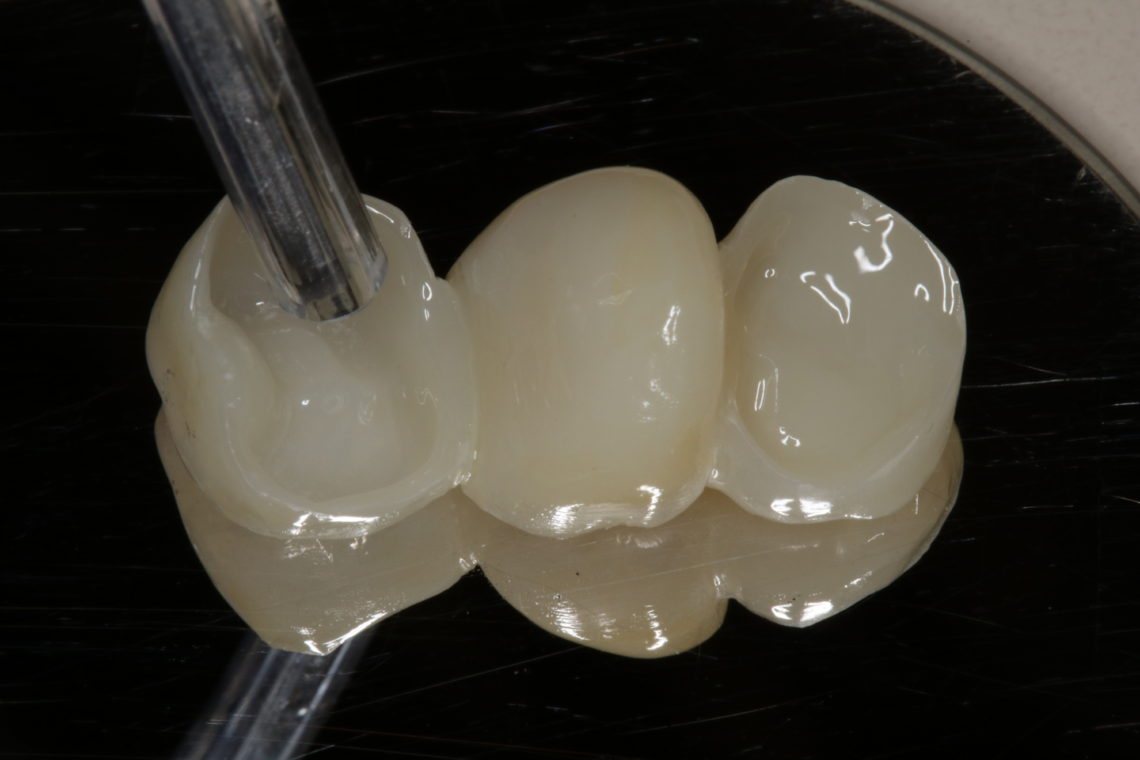
The bridge is now ready to go, so it is now time to prepare the teeth.
Now you could use a cement, but again I prefer to bond my zirconia. When would I cement? If I could not isolate the teeth well or if I was concerned about decay, I might consider using a cement such as a glass ionomer for its fluoride release.
In this case we total etched the prepared teeth with Ultradent’s Ultra-Etch 35% phosphoric acid for 15 seconds (Fig. 7), rinsed it off thoroughly, applied Danville’s Prelude One primer/adhesive to the moist tooth (Fig. 8) for 20 seconds, and then air thinned the primer/adhesive to remove all the solvent (Fig 9).
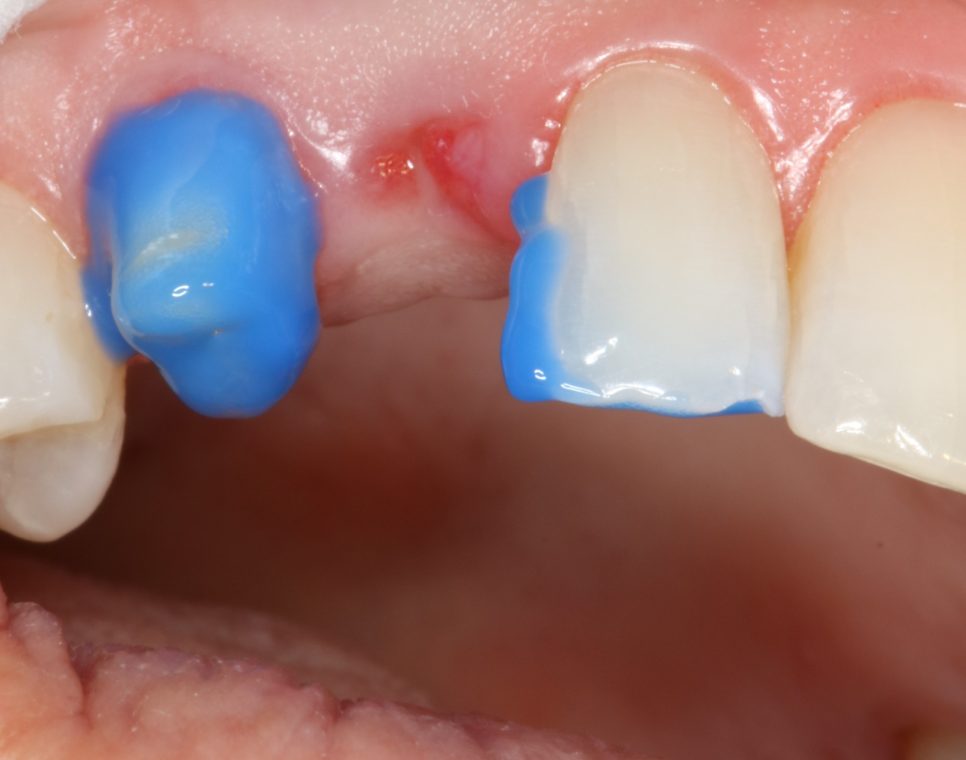
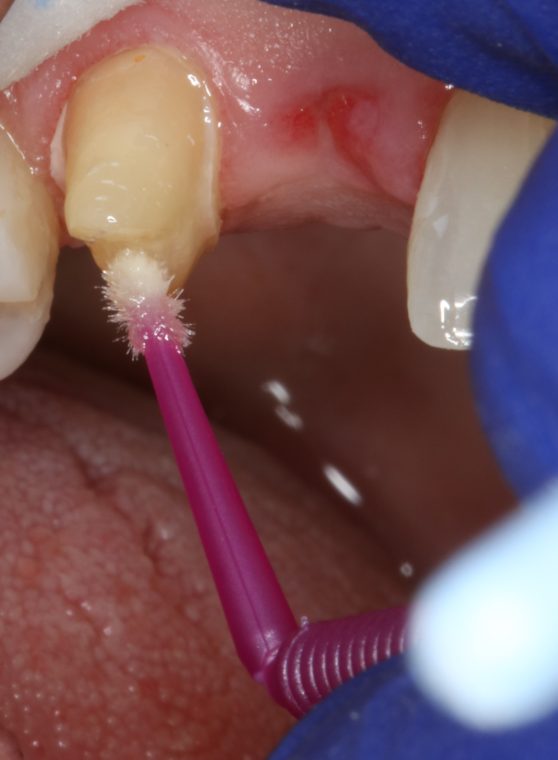
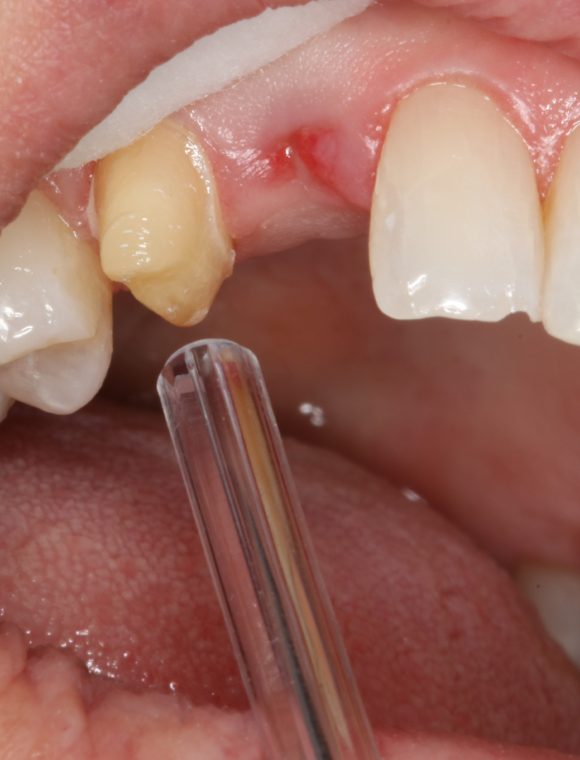
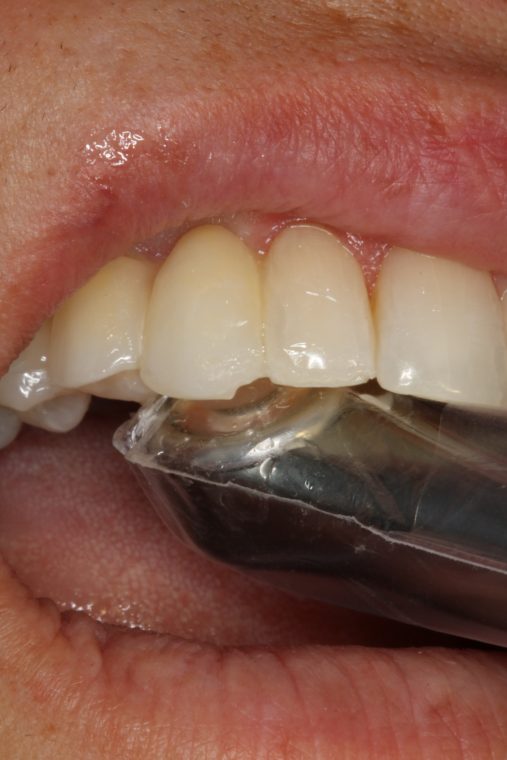
The bridge was filled with an adhesive cement, Danville’s CemEZ, tacked for 3 seconds and the excess cement was then peeled off, and the contacts were flossed.
The immediate post-operative photographs (Figs. 11 and 12) show how I believe we made the correct decision from an aesthetic and tooth conservations aspect. The occlusion in this case was placed more on the tooth #5 in right lateral excursion to protect the pontic and relieve pressure on #7. Our patient was ecstatic.
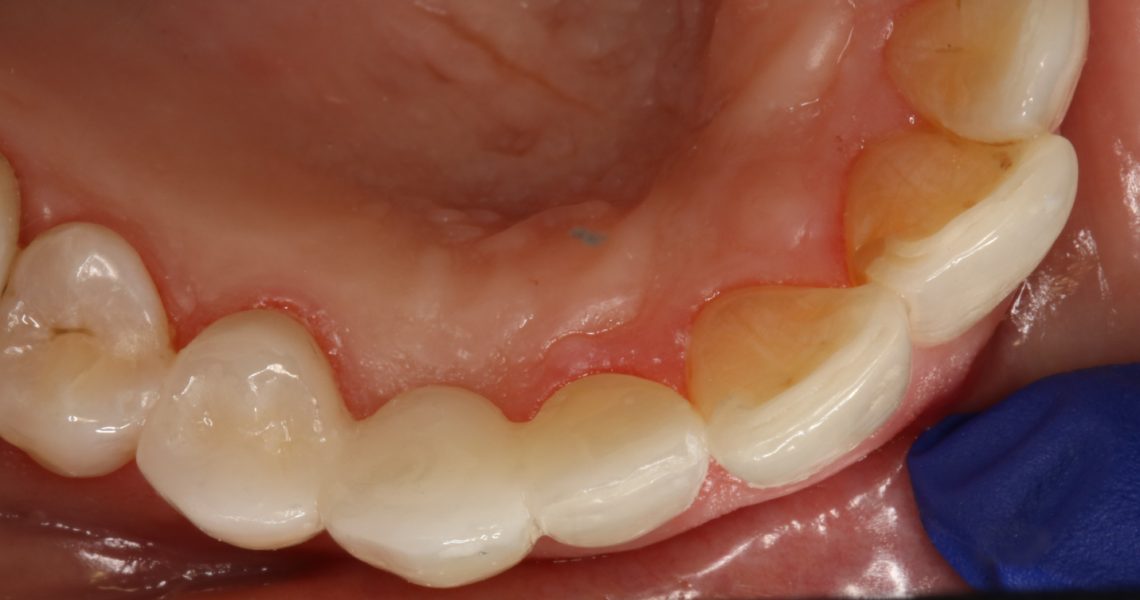
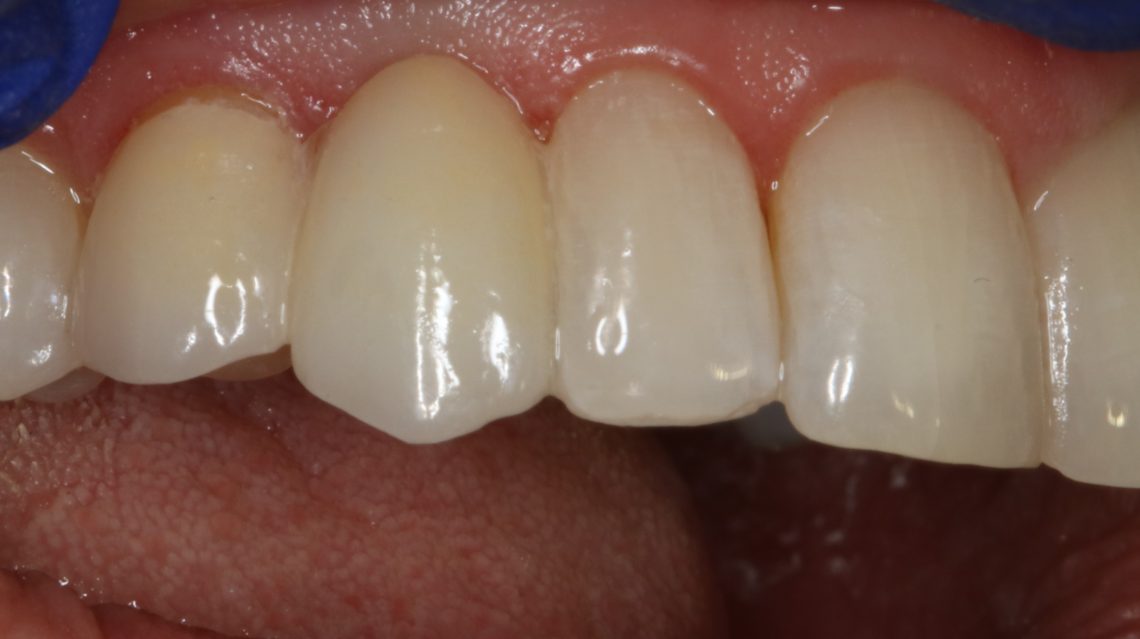
So, I hope this give you some new thoughts on bridges and the adhesive cementation of zirconia. I would like to thank the team at Corr for the excellent work, and for making our lives easier. If you have questions about my article or if you would like to send a case, please contact the Pacific Aesthetic Laboratory Group at www.pacificaestheticdentalstudio.com, Gary Vaughn, CDT, CTO, (888) 461-3331, or via email gvaughn@thePAC.org.
